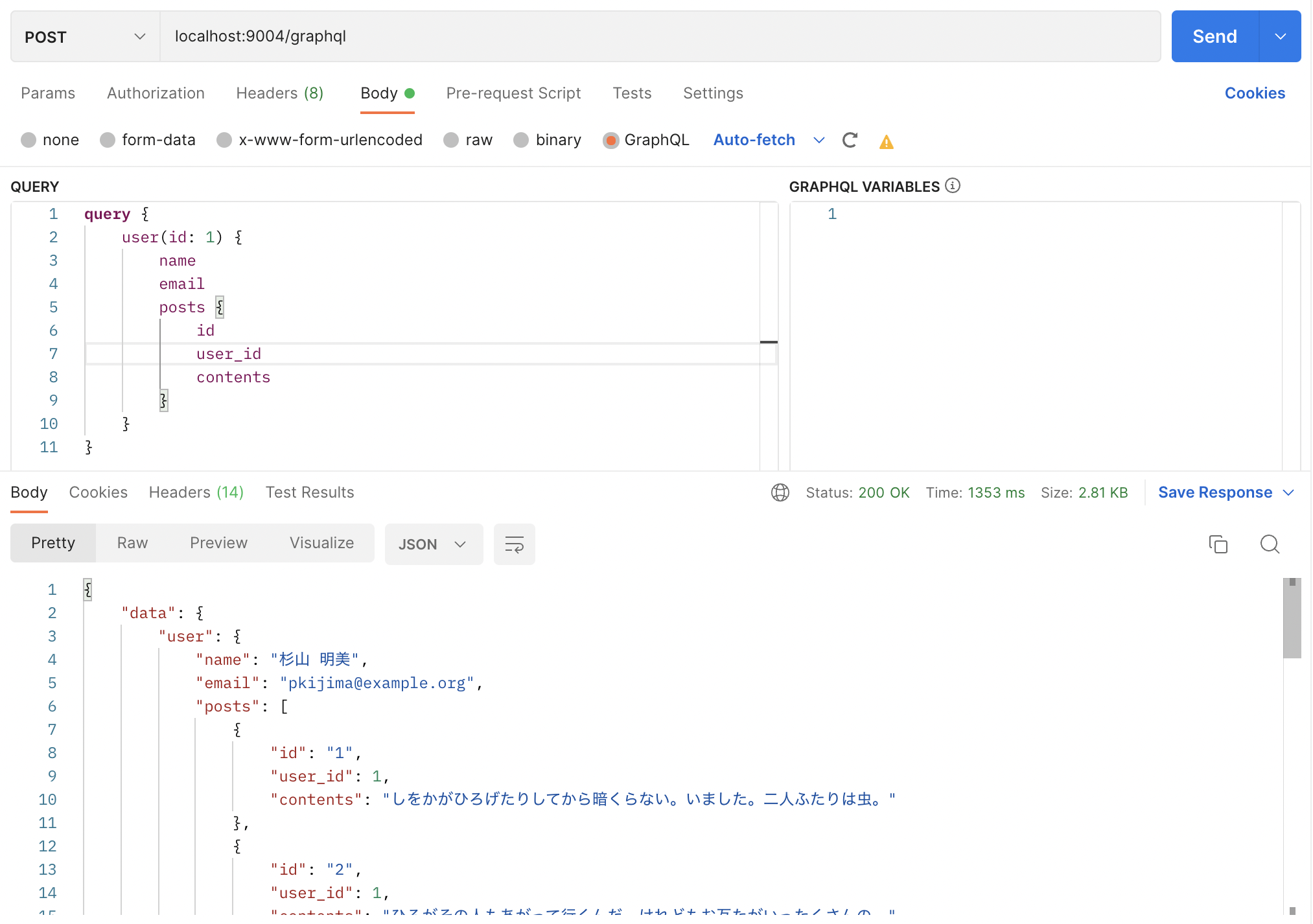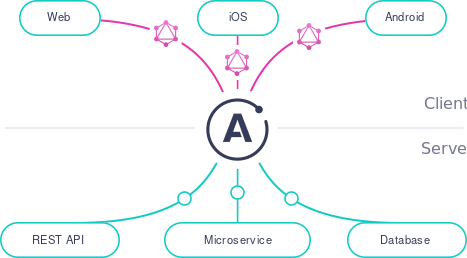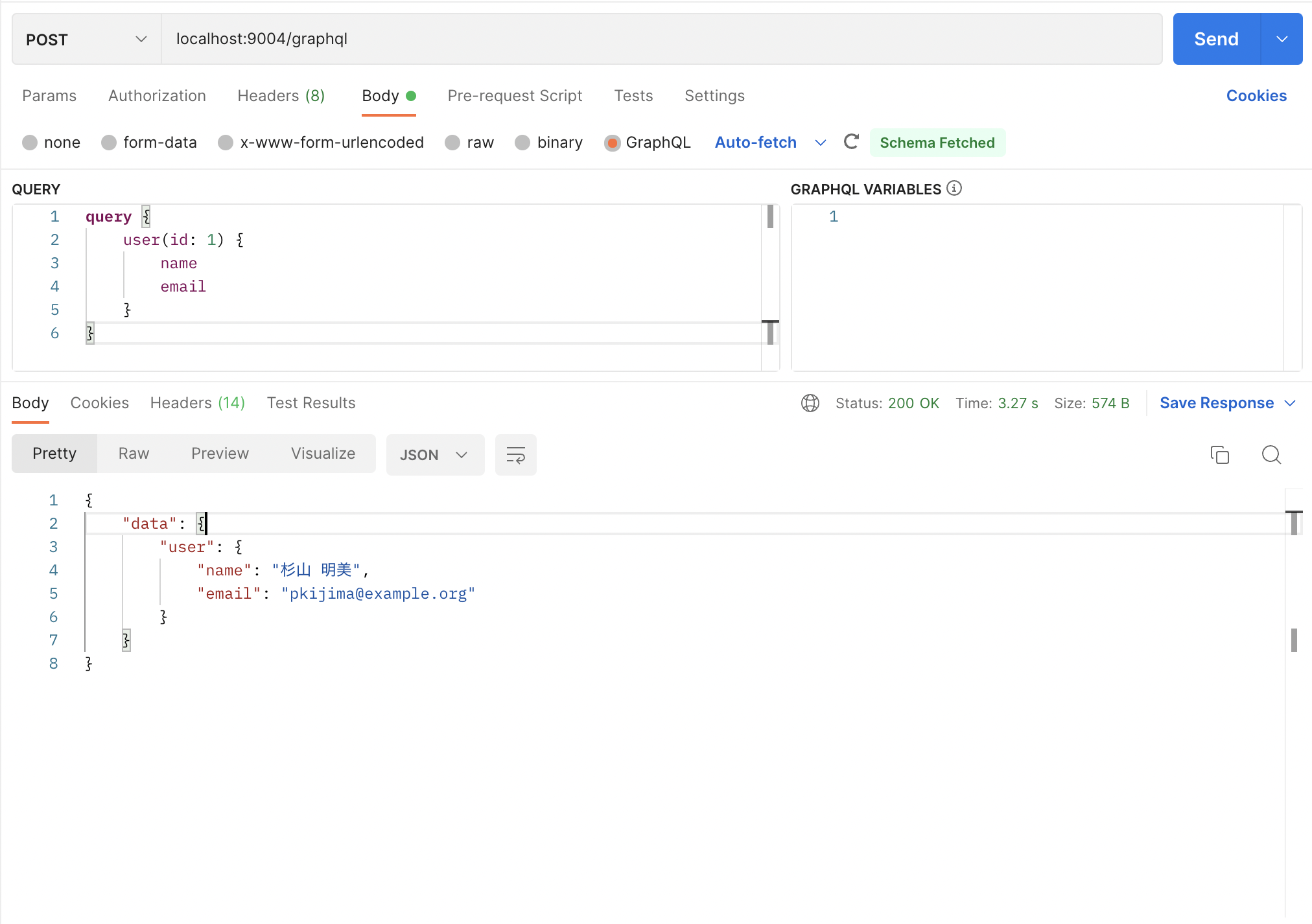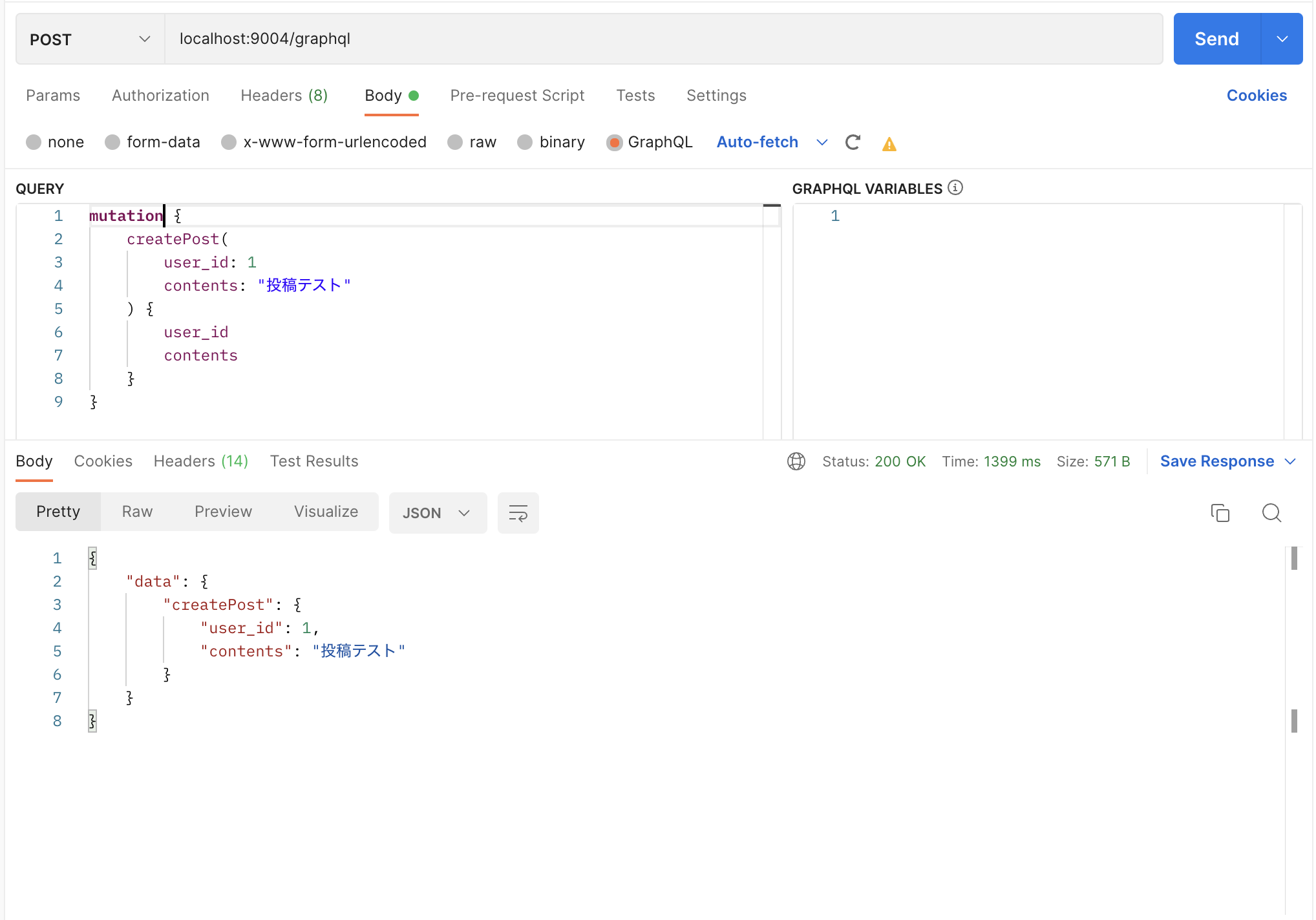はじめに
LaravelのGraphQLフレームワーク「Lighthouse」でGraphQLサーバーを構築します。
また、構築したGraphQLサーバーにPostmanやNext.jsのApollo Clientで実際にクエリを実行してみます。
GraphQLとは
GraphQL は、API のためのクエリ言語であり、既存のデータを使ってクエリを実行するためのランタイムです。
https://graphql.org/
公式で説明されているとおり、GraphQLは、APIのためのクエリ言語です。
GraphQLでは一つのエンドポイントにリクエストを送信することでデータの取得や更新を行います。
特徴として以下のようなメリット、デメリットが挙げられます。
メリット
- 型を指定できる
- RESTの問題点(オーバーフェッチ、アンダーフェッチ)を解消できる
- 必要な情報のみ取得できる
- 複数の情報を少ないリクエストで取得できる
デメリット
- N+1問題が発生する
- HTTPキャッシュ方式をサポートしていない
- クエリが複雑化する
GraphQLの問題点についてはこの記事が参考になります。
環境
- PHP 8.2.0
- Laravel 9.43.0
- nuwave/lighthouse 5.68
- React 18.2.0
- Next.js 13.0.6
- Apollo Client 3.7.2
GraphQLサーバー構築
Lighthouseのインストール
それでは公式ドキュメントに沿ってGraphQLサーバーを構築していきます。
まずパッケージをインストールします。
$ composer require nuwave/lighthouse
次にスキーマ定義のファイルを作成します。
$ php artisan vendor:publish --tag=lighthouse-schema
/graphqlディレクトリ配下にschema.graphqlが作成されます。
このファイルにスキーマ定義を記述していくことになります(デフォルトでUserのスキーマが定義されています)。
scalar DateTime
@scalar(class: "Nuwave\\Lighthouse\\Schema\\Types\\Scalars\\DateTime")
type Query {
user(
id: ID @eq @rules(apply: ["prohibits:email", "required_without:email"])
email: String
@eq
@rules(apply: ["prohibits:id", "required_without:id", "email"])
): User @find
users(
name: String @where(operator: "like")
): [User!]! @paginate(defaultCount: 10)
}
type User {
id: ID!
name: String!
email: String!
email_verified_at: DateTime
created_at: DateTime!
updated_at: DateTime!
}
@eqや@rulesについてはディレクトリと呼ばれるもので、たとえば@rulesではバリデーションを定義することができます。
/graphqlエンドポイントへのリクエストを通すためcorsの設定をしておきます。
return [
- 'paths' => ['api/*', 'sanctum/csrf-cookie'],
+ 'paths' => ['api/*', 'graphql', 'sanctum/csrf-cookie'],
...
テストデータの作成
ファクトリーでテストデータを作成しておきます。
usersテーブルのスキーマ
public function up()
{
Schema::create('users', function (Blueprint $table) {
$table->id();
$table->string('name');
$table->string('email')->unique();
$table->timestamp('email_verified_at')->nullable();
$table->string('password');
$table->rememberToken();
$table->timestamps();
});
}
postsテーブルのスキーマ
public function up()
{
Schema::create('posts', function (Blueprint $table) {
$table->id();
$table->foreignIdFor(User::class)->constrained();
$table->text('contents');
$table->timestamps();
});
}
UserFactory.php
public function definition()
{
return [
'name' => $this->faker->name(),
'email' => $this->faker->unique()->safeEmail(),
'email_verified_at' => now(),
'password' => '$2y$10$92IXUNpkjO0rOQ5byMi.Ye4oKoEa3Ro9llC/.og/at2.uheWG/igi', // password
'remember_token' => Str::random(10),
];
}
PostFacotry.php
public function definition()
{
return [
'user_id' => 1,
'contents' => $this->faker->realText(32),
];
}
DatabaseSeeder.php
public function run()
{
User::factory(1)->create();
Post::factory(10)->create();
}
Postmanからクエリを投げてみる
それではgraphqlのエンドポイントにクエリを投げてみます。
HTTPメソッドはPOSTである必要があります。
Next.jsからもクエリを投げてみる
Next.jsのプロジェクトを立ち上げてApollo Clientをインストールしておきます。
$ npx create-next-app --ts
$ yarn add @apollo/client graphql
index.tsxを修正して、取得したデータをコンソールに表示してみます。
import { ApolloClient, InMemoryCache, gql } from '@apollo/client';
const client = new ApolloClient({
uri: 'http://localhost:9004/graphql',
cache: new InMemoryCache(),
});
export default function Home() {
client
.query({
query: gql`
query GetUsers {
user(id: 1) {
name
email
}
}
`,
})
.then((result) => console.log(result));
...
リレーション先のデータもまとめて取得する
リレーションが設定されているデータもまとめて取得してみます。
まずモデルのリレーション定義をします。
public function posts(): HasMany
{
return $this->hasMany(Post::class);
}
public function user(): BelongsTo
{
return $this->belongsTo(User::class);
}
GraphQLのスキーマにPostの定義を追加します。
type User {
id: ID!
name: String!
email: String!
email_verified_at: DateTime
+ posts: [Post]
created_at: DateTime!
updated_at: DateTime!
}
+ type Post {
+ id: ID!
+ user_id: Int!
+ contents: String!
+ created_at: DateTime!
+ updated_at: DateTime!
+ }
クエリを投げてみます。

postsの情報も併せて取得できているようです。
Mutaion(更新系のクエリ)を実行する
Mutaionでレコードを追加してみます。
まずGraphQLのスキーマにMutaionの定義を追加します。
type Mutation {
createPost(
user_id: Int
contents: String
): Post
@create(model: Post)
}
実行時のqueryをmutationに変更する必要があります。
postsにレコードが挿入されています。
N+1問題を解消する
冒頭でGraphQLのデメリットとして「N+1問題が発生する」という点を挙げました。
上記のリレーション先のデータもまとめて取得するのやり方でいくと、各postsごとにクエリが発行されることになります。
これを解決するために@hasManyや@belongsToを使うことでEagerロードすることをLighthouseに伝えることができます。
type User {
id: ID!
name: String!
email: String!
email_verified_at: DateTime
- posts: [Post]
+ posts: [Post] @hasMany
created_at: DateTime!
updated_at: DateTime!
}
まとめ
他にもページネーションの定義ができたり、ローカルスコープが使えたりEloquantと連携する機能が色々あります。
詳しくは公式ドキュメントを参照してください。
最後に
GoQSystemでは一緒に働いてくれる仲間を募集中です!
ご興味がある方は以下リンクよりご確認ください。



